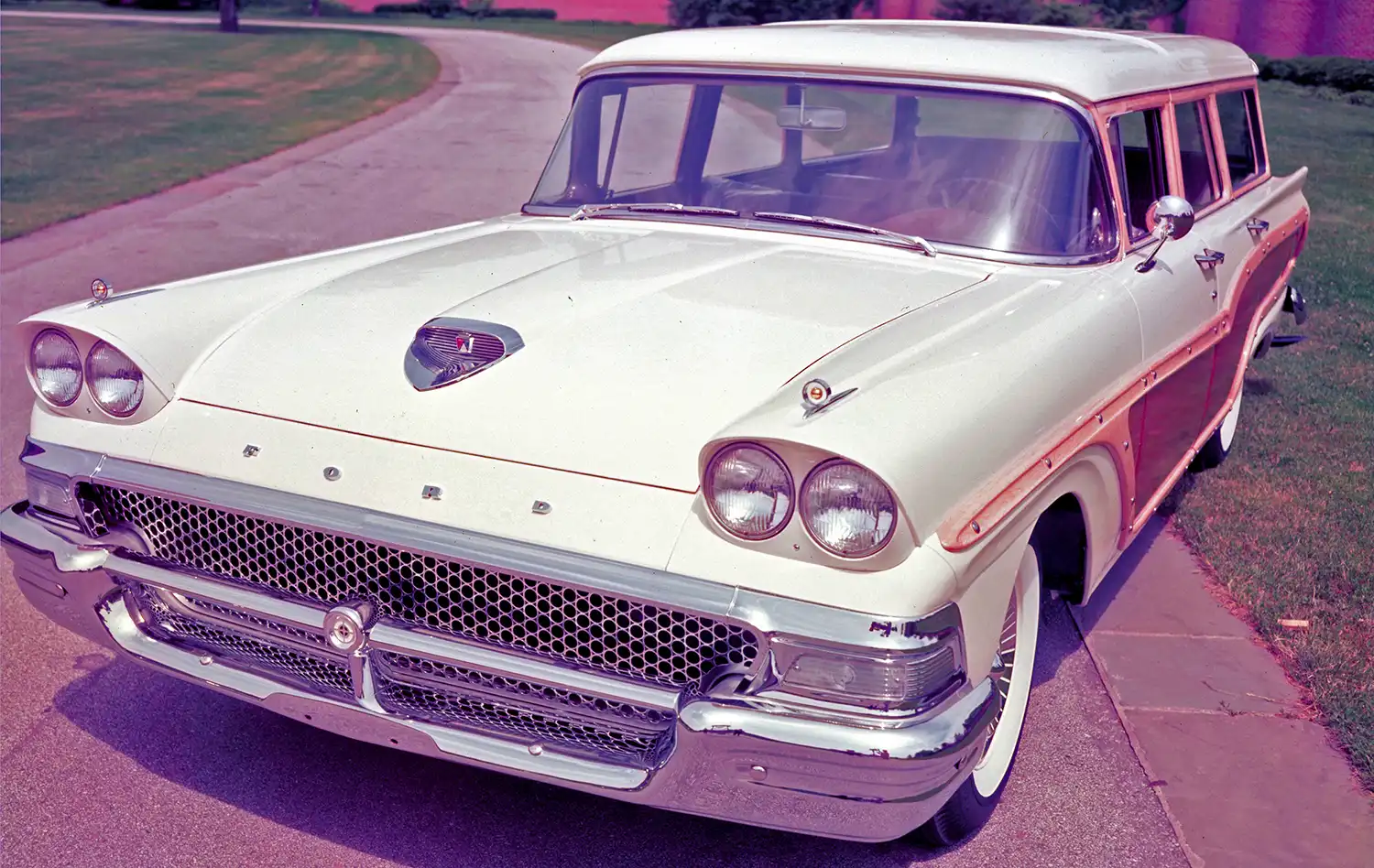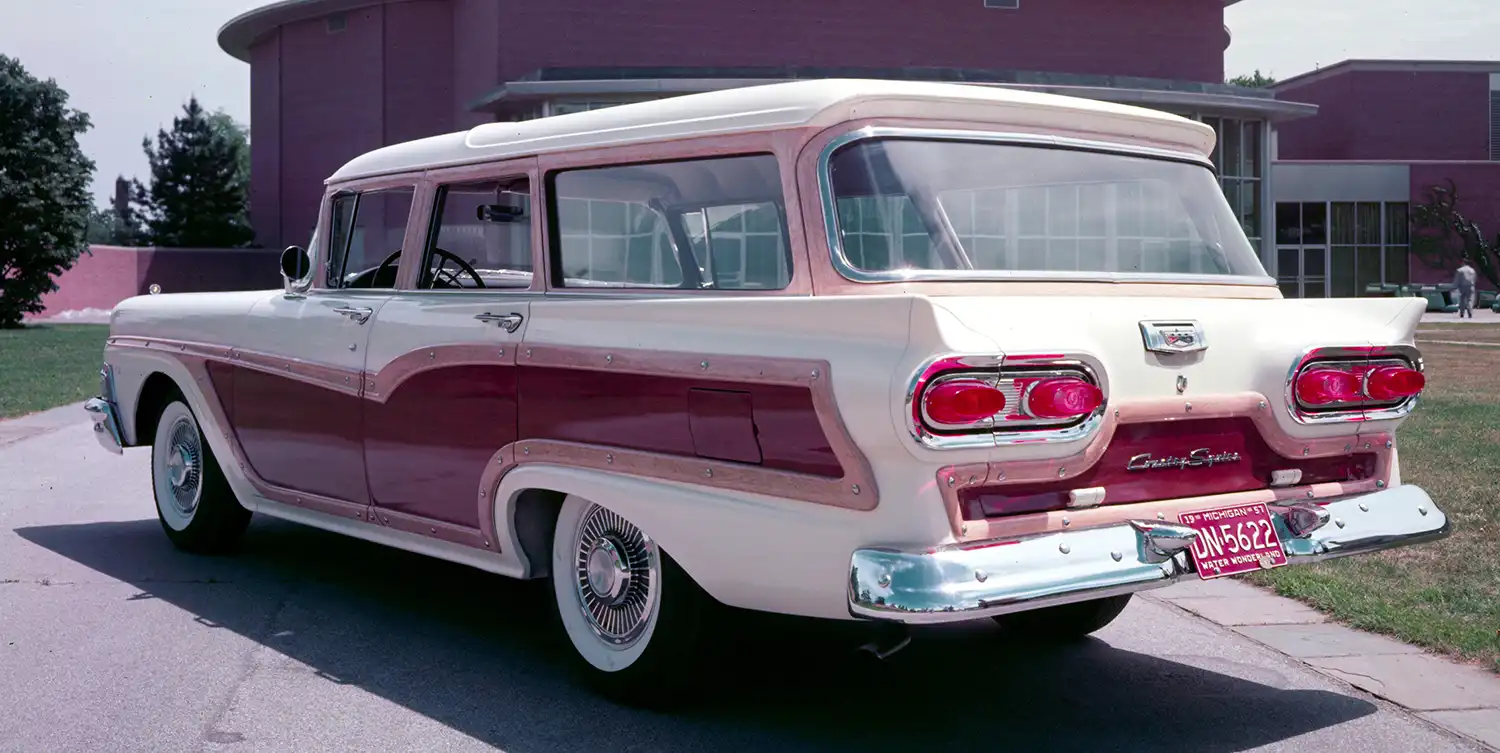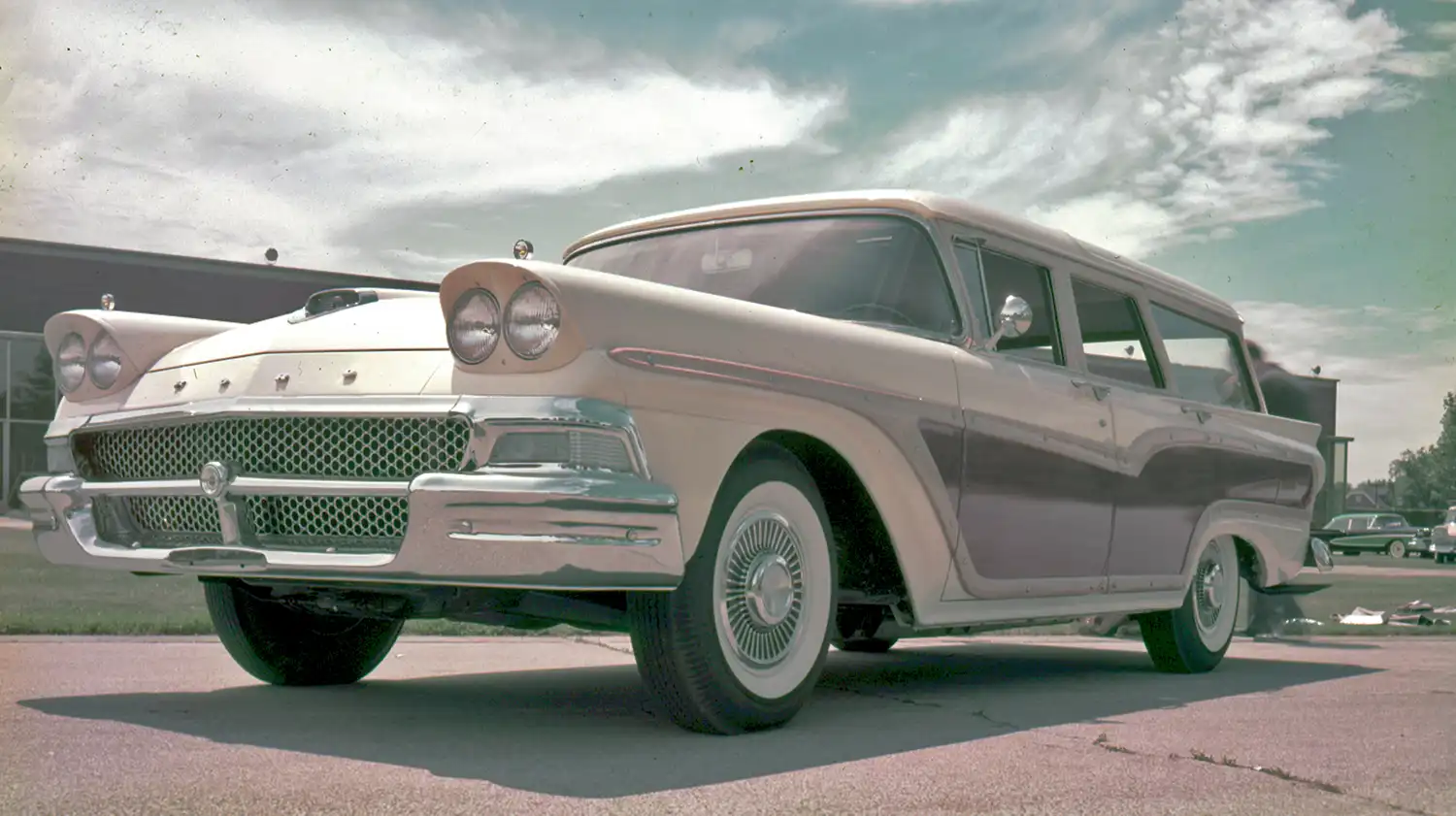
The 1958 Ford Country Squire stands as an iconic symbol of the late 1950s American automotive landscape, particularly within the realm of family transportation. As a full-size station wagon, it represented the pinnacle of Ford’s wagon offerings for that model year, building upon a lineage of practical and stylish haulers. While the “Country Squire” nameplate had been associated with Ford wagons since the early 1950s, the 1958 model year brought a significant redesign, aligning with the era’s penchant for dramatic styling and powerful V8 engines. This generation of Ford wagons, including the Country Squire, was characterized by its long, sweeping lines, prominent chrome accents, and in the case of the Country Squire, its signature simulated woodgrain paneling, a design cue that became synonymous with the model for decades to come. The 1958 Country Squire not only offered immense practicality for growing families and their cargo but also embodied the optimism and forward-looking spirit of the post-war era, solidifying its place as a true automotive icon.
Design and Styling: The 1958 Ford Country Squire was a product of its time, showcasing the flamboyant design trends prevalent in the late 1950s. It featured a long and low stance, accentuated by sweeping side trim and prominent tailfins, albeit more restrained than some of its competitors. The front fascia incorporated a wide grille with quad headlights, a styling cue that was becoming increasingly popular. However, the most distinctive feature of the Country Squire was undoubtedly its simulated woodgrain paneling. Typically applied to the sides and often the tailgate, this treatment mimicked the appearance of traditional wood-bodied “woodie” wagons of earlier decades, adding a touch of classic elegance and upscale appeal to the otherwise practical station wagon. The roofline extended straight back, maximizing interior headroom and cargo capacity, while large windows provided excellent visibility for all occupants. Chrome played a significant role in the exterior styling, adorning the bumpers, window surrounds, and various trim pieces, reflecting the era’s love for brightwork.

Interior Comfort and Practicality: Inside, the 1958 Ford Country Squire was designed with family and utility in mind. It offered seating for up to nine passengers, depending on the configuration, with available third-row seating that could be folded flat to expand the already generous cargo area. The dashboard design was typical of the late 1950s, featuring a wide instrument panel with a large speedometer and various gauges. Materials used ranged from durable fabrics and vinyls for the seating surfaces to color-keyed plastics and chrome accents on the dashboard and door panels. Features like air conditioning, power windows, and power steering were available as options, adding to the comfort and convenience. The large tailgate, often a two-piece design, provided easy access to the expansive cargo area, making it ideal for hauling groceries, luggage, or even camping gear. The overall design prioritized space, comfort, and ease of use for the growing American family.
Powertrain and Performance: The 1958 Ford Country Squire offered a range of V8 engines, reflecting the American appetite for power and smooth performance in larger vehicles. The standard engine was typically a 292 cubic inch “Thunderbird” V8, providing a good balance of power and efficiency for everyday driving. However, for those seeking more performance, Ford offered larger displacement V8 options, including the 332 and the potent 352 cubic inch “Interceptor” V8 engines. These larger engines delivered significantly more horsepower and torque, allowing the hefty wagon to accelerate with surprising vigor and handle highway cruising with ease. Depending on the engine choice, horsepower figures ranged from around 200 to well over 300. These V8 engines were typically paired with either a three-speed manual transmission or an optional Fordomatic automatic transmission, offering a choice between more driver engagement and effortless shifting. The robust chassis and suspension were designed to handle the weight of the vehicle and its potential payload, providing a comfortable ride for all occupants, even on longer journeys. While not a sports car by any means, the available V8 power allowed the 1958 Country Squire to perform admirably for a vehicle of its size and purpose.
Generational Context and Legacy: The 1958 Ford Country Squire was part of a significant period in the evolution of the station wagon. As families grew in the post-war era, so did the demand for vehicles that could accommodate more passengers and cargo than traditional sedans. The Country Squire, with its blend of practicality, style, and available V8 power, became a popular choice for American families. While the simulated woodgrain paneling became its defining characteristic for many years, the underlying design and engineering of the 1958 model laid the groundwork for future generations of Ford wagons. The full-size station wagon segment continued to be important for decades, and the Country Squire remained a key player, evolving in terms of styling, features, and powertrain options over its long production run. The 1958 model, with its distinctive late-1950s flair and emphasis on family-friendly utility, holds a special place in automotive history as an icon of its time, representing an era when the station wagon was not just a practical vehicle but also a symbol of American family life and the open road.
Summary:
- Full-size station wagon embodying late 1950s American style.
- Signature simulated woodgrain paneling on the exterior.
- Spacious interior with seating for up to nine passengers.
- Available with a range of V8 engines for smooth power.
- Represented a key model in Ford’s wagon history.
- Embodied the practicality and optimism of the post-war era.
- Offered a blend of utility and distinctive styling.
- Available with automatic or manual transmissions.
- Provided ample cargo space for families and their belongings.
- Remains an iconic symbol of late 1950s family transportation.
Disclaimer: Information provided is based on general automotive knowledge and historical data. Specific features and performance figures may have varied based on options and production variations. Consult original specifications for precise details.
Source: Ford & Ford Heritage Vault
AI Assistance: Gemini
